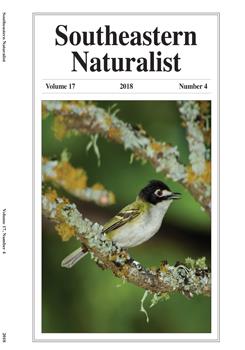Abstract
Lindera melissifolia (Pondberry) is a federally endangered shrub that reproduces primarily by ramets from rhizomes and occurs in scattered clonal populations in bottomland forests of the southeastern US. Like other members of the Lauraceae indigenous to the US, Pondberry is susceptible to laurel wilt, a lethal disease caused by the fungal pathogen, Raffaelea lauricola. We conducted studies to determine the impact of laurel wilt on Pondberry colonies. We grew Pondberry in pots and in raised beds for 2–5 y; during this time, multiple ramets developed around the original plants. We subsequently inoculated single Pondberry stems in colonies with R. lauricola, or mock-inoculated stems with sterile deionized water. Stems inoculated with R. lauricola began to show symptoms within 2 weeks and completely wilted in ∼4 weeks. In pot studies, R. lauricola spread through rhizomes and caused wilt in an average of 77% of ramets in one experiment and 59% in another. The wilt also spread rapidly through connecting rhizomes in field experiments, killing as many as 59 ramets at distances of up to 4 m from the inoculated stems. Although laurel wilt has been rarely documented in Pondberry, our study demonstrates that when infections by R. lauricola occur, they can have detrimental effects to Pondberry colonies.





